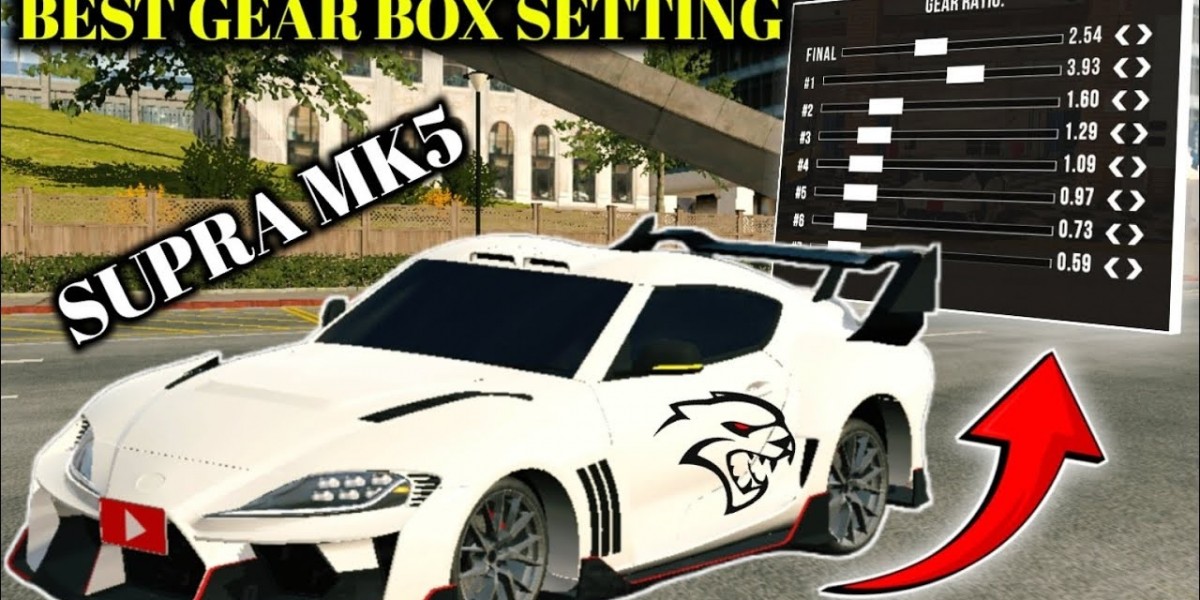Many players of Car Parking Multiplayer encounter difficulties when their in-game vehicle’s gearbox settings don’t quite match their driving style. Inaccurate settings can lead to sluggish acceleration, missed shifts, and overall reduced performance during critical parking maneuvers. Frustration builds as even minor misconfigurations make the challenge of mastering tight turns and precise stops seem nearly insurmountable. The need for a well-calibrated gearbox is clear when even slight delays or abrupt shifts can affect gameplay.
Fortunately, there is a solution that can transform your gaming experience. By carefully adjusting parameters such as gear ratios, shift timing, and throttle responsiveness, you can tailor your vehicle’s performance to suit your personal driving style. This fine-tuning not only enhances precision but also brings a new level of enjoyment and competitive edge to your gameplay. For additional guidance on refining these adjustments, you might consider exploring an in-depth tuning resource that offers expert insights without overwhelming technical jargon.
Understanding Gearbox Mechanics in the Game
What Is a Gearbox and Why Does It Matter?
In Car Parking Multiplayer, the gearbox is more than just a means to shift speeds—it is the heart of your vehicle’s performance. The gearbox controls how power is transferred from the engine to the wheels, affecting acceleration and the overall responsiveness of your car. A well-optimized gearbox can make the difference between a smooth parking maneuver and a chaotic struggle for control. Understanding this mechanism is the first step toward maximizing your in-game potential.
The Role of Gear Ratios
Gear ratios determine the balance between speed and torque, playing a pivotal role in how your vehicle responds during acceleration and deceleration. A lower gear ratio might give you more torque at lower speeds, while a higher ratio can boost your top speed. Fine-tuning these ratios ensures that your vehicle remains responsive in tight spots and powerful when more speed is required. Balancing these factors is essential for effective gearbox optimization.
Why Optimizing Your Gearbox Settings Matters
Enhancing Performance and Precision
Optimizing your gearbox settings is not merely a technical adjustment—it is a pathway to enhanced performance. Correct settings can significantly improve your control during rapid gear changes and ensure smoother transitions during challenging maneuvers. This improved performance translates into quicker, more precise parking and a competitive advantage in multiplayer settings. Every fraction of a second saved can contribute to a better overall gaming experience.
Improving Game Enjoyment
A well-tuned gearbox contributes to a more immersive and satisfying gaming experience. When your vehicle responds exactly as you intend, every parking challenge becomes an opportunity to showcase skill rather than a trial of frustration. The balance between precision and power adds a realistic dimension to the game, making every drive feel more authentic. Enjoying the game becomes easier when your vehicle behaves predictably and meets your expectations.
Key Components to Consider When Adjusting Your Gearbox Settings
Gear Ratios
Gear ratios are critical because they determine the vehicle’s acceleration curve and top-end speed. Choosing the right balance can give you the boost needed during rapid maneuvers without compromising control at lower speeds. Experimenting with slight modifications can help you find the ideal balance for your playing style. Remember that what works for one player may not work for another, so personalization is key.
Shift Timing
Shift timing plays a crucial role in how efficiently your vehicle uses its available power. Adjusting the timing for gear changes can lead to smoother transitions and prevent jerky movements during acceleration. Fine-tuning this aspect requires attention to the vehicle’s performance characteristics and your own reaction time. Optimized shift timing enhances overall responsiveness, making it easier to navigate tight parking scenarios.
Throttle Responsiveness
The sensitivity of your throttle directly impacts how your vehicle reacts to changes in speed and direction. By adjusting throttle responsiveness, you can ensure that the vehicle reacts in a predictable manner, which is essential during precision maneuvers. This setting works in tandem with gear ratios and shift timing to provide a well-rounded driving experience. Proper throttle settings reduce the risk of overcorrection and help maintain smooth control.
Step-by-Step Guide to Tuning Your Gearbox Settings
Step 1: Analyze Your Current Performance
Begin by assessing how your current gearbox settings affect your gameplay. Take note of any delays in acceleration, jerky shifts, or unexpected power losses during maneuvers. Record your experiences and identify specific areas where performance seems to falter. A clear understanding of your starting point is essential for effective tuning.
Step 2: Adjust Gear Ratios
Start by making small adjustments to your gear ratios. Focus on modifying one gear at a time to understand how each change impacts performance. Experiment with lower ratios for increased torque during slow maneuvers or higher ratios for improved speed on longer stretches. Test your adjustments in a controlled environment before applying them to competitive gameplay.
Step 3: Fine-Tune Shift Timing
Once you have a better understanding of your gear ratios, adjust the shift timing to complement these changes. Practice shifting at different intervals to see how it affects the smoothness of acceleration. Consistent timing can lead to improved responsiveness and a more enjoyable driving experience. Incremental adjustments are key to avoiding overcorrection.
Step 4: Calibrate Throttle Responsiveness
With gear ratios and shift timing adjusted, move on to fine-tuning the throttle responsiveness. Gradually increase or decrease the sensitivity to achieve a balance between quick reaction times and controlled acceleration. Observe how your vehicle reacts in various scenarios and adjust accordingly. Proper calibration in this area ensures that your vehicle remains predictable and easier to control during fast-paced maneuvers.
Common Pitfalls and How to Avoid Them
Over-Tuning Your Settings
One common mistake is over-tuning, where players make too many adjustments at once. Overloading your gearbox with multiple changes can lead to erratic behavior and confusion during gameplay. It is best to adjust one parameter at a time and test its impact before moving on to the next. This systematic approach helps maintain balance and prevents performance issues.
Ignoring In-Game Feedback
Another pitfall is disregarding the feedback provided by the game. In-game indicators and performance metrics are valuable tools that can guide your adjustments. Ignoring these signs may lead to settings that do not suit your vehicle’s actual performance. Always consider the feedback and be prepared to revert changes that negatively impact your gameplay.
Relying Solely on Preset Configurations
While preset configurations can provide a good starting point, relying solely on them may not yield optimal results. Each player’s style is unique, and a one-size-fits-all approach rarely leads to peak performance. Personal experimentation is essential. Use preset settings as a foundation, but be prepared to customize based on your personal experience and in-game performance.
Advanced Tips for Fine-Tuning Your Performance
Experiment with Differential Settings
Some advanced players explore differential settings to further enhance their vehicle's handling. Adjusting these settings can affect how power is distributed to the wheels during a shift or while navigating turns. Though this may require a deeper understanding of vehicle dynamics, the potential improvements in handling and stability are significant. Always proceed with caution and document your changes for future reference.
Leverage Practice Modes
Utilizing practice modes or less competitive game sessions allows you to experiment without the pressure of ranked play. This environment is ideal for testing new configurations and observing their effects on your gameplay. Over time, you can build a repository of settings that work best for different scenarios. Consistent practice helps cement your adjustments into muscle memory, enhancing your overall control.
Stay Updated with Community Insights
The gaming community often shares tips and experiences regarding gearbox optimization. Engaging with forums, video tutorials, and discussion groups can provide new perspectives and innovative ideas. Learning from fellow players who have already mastered these techniques can save time and help you avoid common mistakes. Keeping an open mind and staying updated with community insights ensures that your settings remain competitive.
Conclusion
Optimizing your gearbox settings in Car Parking Multiplayer is a multifaceted process that requires patience, experimentation, and a keen understanding of in-game mechanics. By systematically analyzing your performance, making incremental adjustments, and learning from both in-game feedback and community insights, you can significantly improve your vehicle’s responsiveness and overall gameplay. The journey to perfect tuning is ongoing, but every small improvement can lead to a more rewarding gaming experience.








